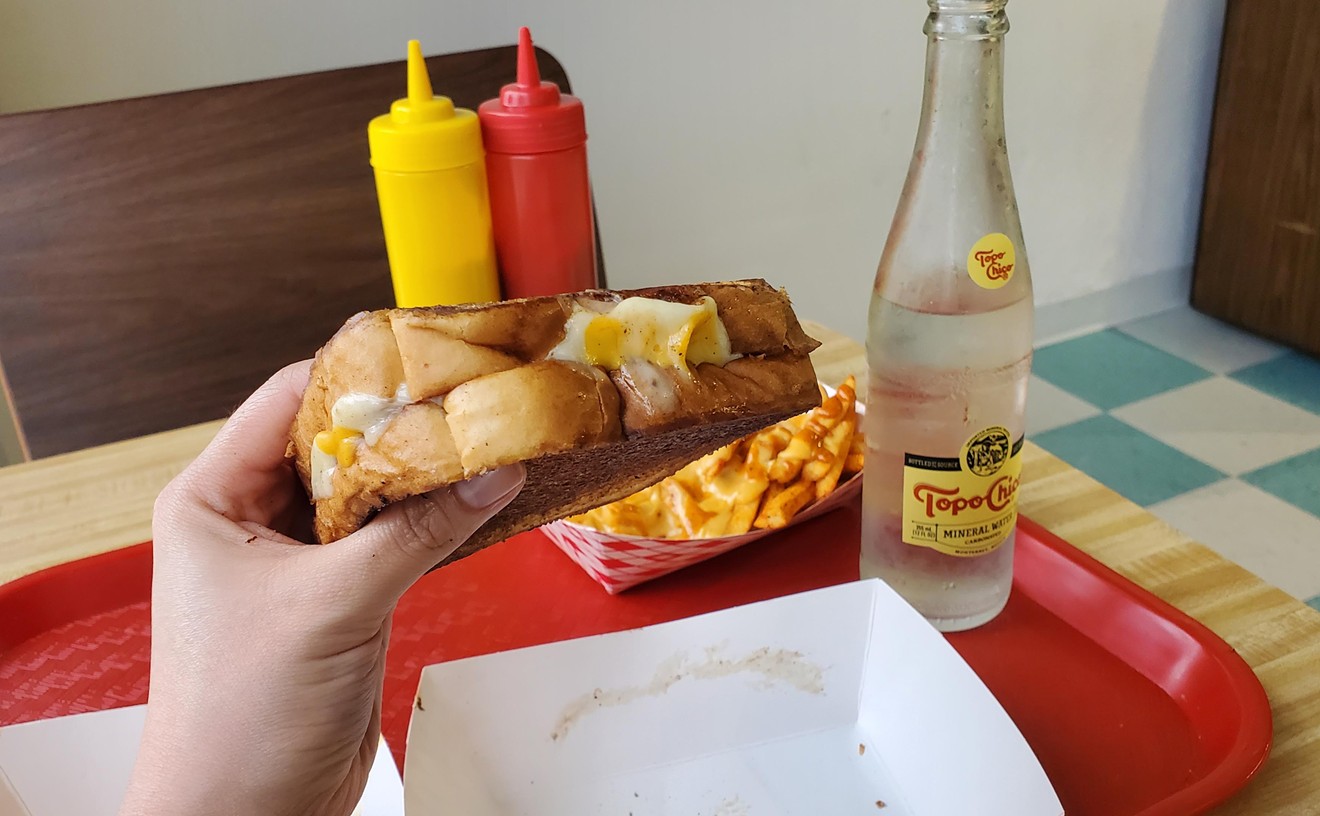In the view of American independent-film fanatics, writer-director Sayles has already been to the mountaintop. For 20 years he's made movies outside the studio system, with stories that try to sing the unsung or champion the dispossessed. Doing "indies" on an epic scale is, of course, not a negligible feat. In 1996, moviegoers starved for panoramic narratives turned Sayles' Lone Star into a huge art-house hit, though it was little more than a lib-rad guide to Tex-Mex mores with a cut-and-dried central mystery. (It could have been called Autopsy of a Murder.) In his urban corruption noir City of Hope, as well as the South American agitprop of Men With Guns, there can be a grinding fascination to seeing Sayles work out his ethnic-and-class view of society.
But John Sayles' films usually bore me. He tends to make his leads monotonously naive and to approach plots (and subplots) like a cartographer instead of a yarn-spinner, pinning every character to his or her place on the social-political map. I enjoyed the spontaneous comedy of Return of the Secaucus Seven and parts of The Brother From Another Planet, and his news-hound's ear and eye for colorful talk and incident energized his short-lived network TV series, Shannon's Deal. Fifty-two minutes suits Sayles' notions of character and storytelling. If his filmmaking had fire and poetry, it would rouse the mixture of despair and euphoria you get while watching the work of great political directors like Gillo Pontecorvo (The Battle of Algiers, Burn!) or Francesco Rosi (Moment of Truth). Unfortunately, even when Sayles dabbles in tricky flashback structures or magic realism, he's ploddingly melodramatic. Indie or not, it's as if he aspires to be the Hollywood 11th.
Men With Guns held me longer than many of Sayles' films, and not just because of its colorful ambiance. Its hero has potential tragic stature: He's a doctor who trained medical students for service in remote villages. Now widowed and near the end of life, he wants to venture into the wild to see if his program has helped the natives. With his long face and regal features, the Argentinean actor Federico Luppi brings the role a rueful gallantry--it's what the character needs to keep from becoming ridiculous. As he makes his journey, he strives to believe in progress despite vivid evidence to the contrary. Natives flee from the sight of him; in an allegorical stroke, those who dare to talk to him identify themselves according to their crops, as Corn People or Coffee People or Gum People. (If the price of coffee drops, and the Coffee People can't make enough money to eat, they starve--all they grow is coffee.)
The misfit fellow travelers the doctor acquires are scholars of atrocity. A jaded, smart-mouthed urchin (Dan Rivera Gonzalez) takes him to a killing field and swings a human bone as if it were a baseball bat; a defrocked priest (Damian Alcazar) calls himself a ghost and admits he saved his own life at the expense of his flock; a runaway soldier (Damian Delgado) confesses the moral trauma of his army initiation--the murder of a helpless man. (He also raped a helpless woman.) Nonetheless, the doctor keeps hoping to find that one of his proteges has honored his medical outreach program and escaped the bullets of the army and guerrillas.
I kept hoping so too--for the sake of the drama. Without the possibility of any good coming from the doctor's humanist intentions, the movie begins to feel like a punishment: a gantlet for the same urban liberals who will doubtless be its biggest audience. Both Sayles and novelist Francisco Goldman (The Long Night of White Chickens) say that the doctor was based in part on one of Goldman's real-life relatives, an uncle who spearheaded a Guatemalan rural-health-care program whose medics were slaughtered by the government. Goldman, a friend of Sayles', says that his uncle's endeavor nevertheless has thrived; he sees it as a real-life reflection of the hint of redemption and hope at the end of Men With Guns. But the hint of redemption and hope in the film is actually wispy and corny, and no comfort at all to Sayles' doctor.
Sayles thinks he's condemning merely the doctor's ignorance. But the movie in effect condemns the doctor's race and class in toto. In a framing device reeking of warmed-over magic realism, an Indian mother tells the doctor's story to her angelic daughter. As the mother explains why city people are different, Sayles fades from their vibrant female faces into the movie proper. The first thing we see is a Visible Man-like model of the brain and upper body, standing in the doctor's office. To Sayles, there's no magic or instinct left in contemporary Western civilization. With trademark Sayles subtlety he introduces us to his hero when he happens to be giving a rectal exam to an army general; this bloated jefe declares that Marxists spread stories of unrest to fill the common people's love for drama. If only Sayles could do that! He doesn't dramatize--he demonstrates. And what the opening section demonstrates is the vacuity of the doctor's world. Everyone from his racist son-in-law to the aging women in his waiting room come off as empty, silly, or malicious.
Once the doctor hits the road, the movie threatens to spring to life as a political variation on Ingmar Bergman's geriatric road movie Wild Strawberries. (I kept waiting for Sayles to tip his hand by introducing some Strawberry People.) The film reneges on that promise--only Luppi's wounded patrician eyes provide a little bit of soul. Despite a parade of crippled consciences and a mystical overlay, all that's potent about the movie are its melodramatic set pieces. To Sayles' credit, he conveys the horrific sway that "men with guns" hold over pastoral communities. But Sayles' heavy hand shows again when the deserter buys three bullets for an empty gun and dubs them "The Father, the Son, and the Holy Ghost," or when the doctor then plays with the gun without realizing that it's loaded.
Cinematographer Slawomir Idziak gives the film a distinctive tawny-and-dirty-green palette; the paths between palm trees sometimes register as nightmare alleys. Too bad Sayles' filmmaking instinct is deficient: He doesn't know how to make images lodge in our minds and tingle. He never ranges beyond the functional. He lacks the lyric impulse that might lend a menacing shimmer to a machete. And he tries and fails to conjure the emotional immediacy that would give a lift to the whole ensemble. When the urchin nonchalantly swings that bone, Sayles keeps the existential terror at one remove; it won't haunt me the way the Mexican bandits surrounding Bogart do in Huston's The Treasure of the Sierra Madre (which moved across similar terrain). Sayles doesn't see action poetry in reality, only hackneyed prose.
Despite the smart-alecky edge to some of the dialogue, Men With Guns has an implicit, brutal sanctimony. Sayles largely ignores any fruitful interactions between whites and Indians. The doctor proves to be so out of it that he's unworthy of exemplifying what Goldman calls "the dilemma of the conscious liberal" caught between political extremes. Indeed, the hero is almost as irrelevant as the picture's comic-relief tourists (Mandy Patinkin and Kathryn Grody): enlightened, educated Americans who end up looking ridiculous because they're not sufficiently politically engaged. The only ones Sayles gives a pass to are the remaining unspoiled Indians. He may be a man of humane concerns, but in Men With Guns his attitudes are strictly brown and white.
Men With Guns.
Directed and written by John Sayles. Starring Federico Luppi, Damian Delgado, Dan Rivera Gonzalez, Tania Cruz, and Damian Alcazar. Opens Friday.










